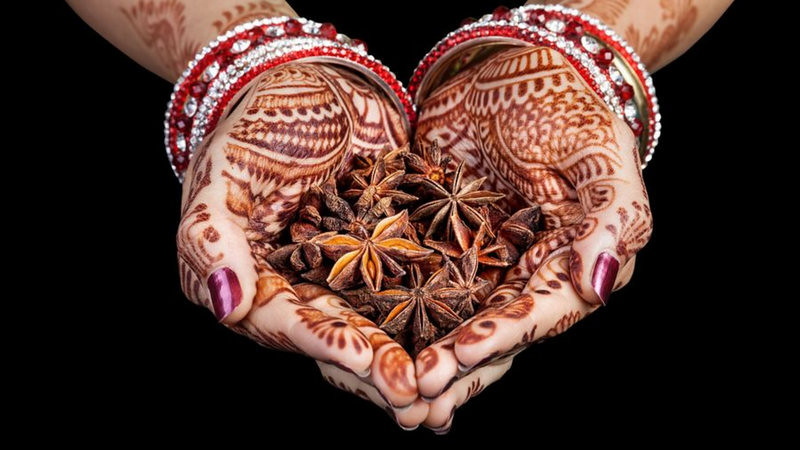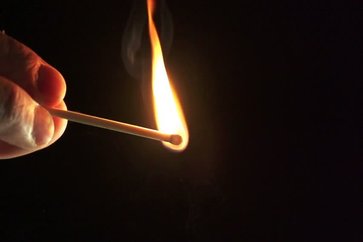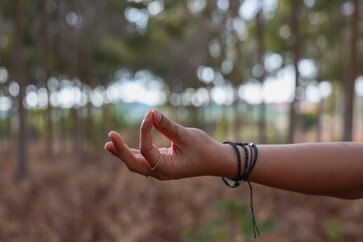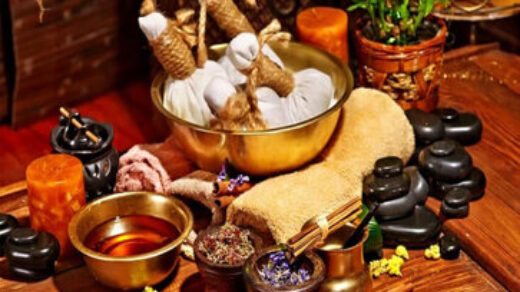Types Of Ayurvedic Treatments In Kerala That Really Works
Ayurvedic Treatment is a procedure to cure various ailments according to the teachings of Ayurveda. The word “Ayurveda” is made up of the words “Ayur” – science and “Veda” – life. Ayurveda is a traditional holistic medicine that originated long ago in India, also known as the science of life.

Ayurveda treatments are performed on a person according to the requirements for an ailment, under the supervision of a specialized Ayurvedic doctor. There are many Ayurvedic treatments, which are focused and specialized in the treatment of various problems or diseases.
Many tourists every year go to Ayurveda Resorts in Kerala India or Ayurveda retreats in Sri Lanka to get the benefit, the time period of treatments can be from one, two, three, or four weeks and according to the Ayurvedic treatments or packages they want.
The Best Ayurvedic Treatment in Kerala
In this post, you will learn about various popular Ayurvedic treatments that are offered at various spa hotels in Kerala India, so that you can get an idea.
If you want to start with the wonderful adventure of an Ayurvedic cure, below are some of the Ayurvedic which are beneficial for health and can give you positive effects.
1. Shirodhara
Shirodhara is an Ayurvedic therapy in which medicated oil is poured on the forehead, it is probably the most famous of Ayurvedic treatments. The medicated oils are made with a special blend of unique oil with herbs.
Recipes may vary, but it is believed to be made dating back more than 2000 years. Constant drip aims to calm the nervous system and reduce stress. It can also relieve headaches and is often accompanied by a head massage.
2. Ayurvedic baths
Ayurvedic bath is considered a wonderful therapy that cleanses the body and helps to rejuvenate the mind and soul. The atmosphere is created in such a way that you feel heaven, a lighted scented candle, or an aromatherapy infuser, like lavender, lemon, lemongrass, or rose.
The goal of this Ayurvedic treatment is not difficult to guess, as you get relaxed. These types of Ayurvedic baths are used to relax the muscles and for body relaxation and revitalization. Flowers, and herbs are often added and oils can also be used in the water. The heat and smell do the rest of the work!
3. Head massage treatment
Ayurvedic head massage treatments are very versatile. If you have already discovered Shirodhara before, there are also other types of applications with oils and herbs.
There are also many heads and stretched head massages. Two names known as Ayurvedic head treatments are Shiroabhyanga (massage) and Shirovasti (head treatment with oil). This Indian head massage not only improves hair growth but also increases mental clarity and revitalization.
4. Ayurvedic masks
Facial masks in Ayurveda, the best treatment for beauty care. The use of medicinal clay, herbs, oils, and other natural ingredients are used in a face pack.
This pack helps to soothe the skin and can have many effects such as revitalization, rejuvenation, or detoxification. This therapy helps the skin to hydrate, remove excess oils and improve the appearance of your pores making your face glowing.
5. Ayurvedic Wraps
Ayurveda Wraps, is a procedure, with wrappings and exfoliation. A variety of different ingredients are used for this Ayurvedic treatment which is mainly herbs and oils.
The wraps can be complete body wraps or partial wraps, which vary depending on the purpose of the treatment, but the ingredients are always natural. This therapy helps to calm and relax your dosha or body type (Kapha, Pitta, or Vata) boost energy, and helps to lose weight.
6. Oil treatments
There are countless different applications with oil among Ayurvedic treatments. For some of them, the oil is applied to only one part of the body and massaged later.
Other times, the pastes are used to control the flow of oil. Traditional Ayurvedic massage is known as ” Abhyanga “, it is often done with hot oil. The oil is considered a carrier for medicinal substances and for every dosha, there are special oils.
7. Pinda Sveda
The massage with herbal applications is called ” Pinda Svelda “. There are mixtures of herbs of different aromas. Pinda Svelda is often applied as a synchronized massage, also called four-hand massage.
Pinda Svelda is often done after a full body massage. The purpose of this Ayurvedic treatment is to make the person undergoing treatment perspire. Hot applications open the pores of the skin to let medicinal substances in.
8. The Yoga
Yoga is the “Ayurvedic sport.” This ancient discipline is often practiced during Ayurvedic healing every day. Yoga is known for maintaining a flexible body, relaxing the muscles, and strengthening them through controlled use.
The persons who are beginners to yoga or who have flexibility problems are given to do light exercises to improve body balance. For yoga lovers, Ayurvedic treatment is the perfect opportunity to practice yoga in a unique environment.
9. Meditation
In Ayurveda, Meditation is also considered an important aspect of healthy living. The meditation can be followed in different ways. Sometimes daily, sometimes once a week to give mental relaxation.
By meditating, you will learn to let go and focus on your body. You can do individual or group sessions. The breathing technique and postures are particularly important.
(FAQs) of Ayurvedic Treatments in Kerala
Q: What is Ayurveda?
A: Ayurveda is an ancient system of natural healing that originated in India thousands of years ago. It focuses on balancing the body, mind, and spirit to promote overall health and well-being.
Q: What makes Kerala a popular destination for Ayurvedic treatments?
A: Kerala, located in southwestern India, is renowned for its traditional and authentic Ayurvedic treatments. The state’s natural abundance of medicinal plants, experienced practitioners, and serene environment makes it an ideal place for Ayurvedic therapies.
Q: What are some common Ayurvedic treatments offered in Kerala?
A: Kerala offers a wide range of Ayurvedic treatments, some of which include Panchakarma (detoxification and purification therapies), Abhyanga (therapeutic massages), Shirodhara (pouring of medicated oil on the forehead), and Nasya (nasal administration of medicines).
Q: How does Panchakarma work, and what are its benefits?
A: Panchakarma is a deep cleansing and rejuvenating therapy. It involves five main procedures aimed at eliminating toxins from the body, restoring balance, and enhancing vitality. The benefits of Panchakarma include improved digestion, enhanced immunity, and relief from various chronic health conditions.
Q: Can you explain the Abhyanga massage technique and its benefits?
A: Abhyanga is a full-body massage using warm medicated oils. The therapist performs specific strokes to stimulate the flow of energy, release tension, improve circulation, and nourish the tissues. Abhyanga promotes relaxation, relieves muscle stiffness, and nourishes the skin.
Q: What is Shirodhara, and how does it help with stress and anxiety?
A: Shirodhara involves a continuous stream of warm oil or herbal decoctions poured onto the forehead (the “third eye” area). This therapy induces a deep state of relaxation and calmness, which can reduce stress, anxiety, and promote better sleep.
Q: What are the benefits of Nasya treatment?
A: Nasya is a procedure where medicated oils or powders are administered through the nostrils. It helps to clear the nasal passages, relieve sinus congestion, improve respiratory health, and also benefits conditions related to the head, neck, and sensory organs.
Q: Are Ayurvedic treatments safe for everyone?
A: Ayurvedic treatments are generally safe, but it’s essential to consult a qualified Ayurvedic practitioner before undergoing any therapy, especially if you have specific health conditions or are pregnant. The treatments are personalized according to individual body types and imbalances.
Q: How long do Ayurvedic treatments usually last?
A: The duration of Ayurvedic treatments can vary depending on the therapy and the individual’s health needs. Some treatments may last for a few days, while others can extend to several weeks for more intensive therapies like Panchakarma.
Q: Can Ayurvedic treatments be combined with other medical treatments?
A: Ayurveda can complement conventional medical treatments in many cases, but it’s crucial to inform both your Ayurvedic practitioner and your primary healthcare provider about any ongoing treatments or medications to ensure there are no contraindications.
Please note that while Ayurveda has been practiced for centuries and is generally considered safe, it is essential to seek treatments from reputable Ayurvedic centers and qualified practitioners to ensure safe and effective results. Always consult with a healthcare professional before starting any new treatment regimen.



























I am from Canada would like to get some information about the ayurvedic treatments and the relevant fees. Planning to come there after the covid19 is over may be next year. I would like to get a estimate of an all inclusive package. I have diabetes and BP but both are controlled by meds. Also please let me know how long I have to stay there to get a good treatment and rejuvenate. I am 78 and in good health otherwise.
thank you
looking forward for your response.
thank you kindly.
As the world is developing in technology day by day we are moving away from nature. We have depleted nature’s every gift, polluted the environment with deforestation. Nature is reacting on us in the form of natural calamities and certain diseases.
With the constantly changing lifestyle of man, new health problems are emerging forcing man to look towards alternative medicine for cure. In spite of the fact that medical sciences have made great advancements, there are still certain aspects that are left unanswered by them.
The history of Ayurveda goes back thousands of years. The primary goal of Ayurveda has been twofold — promotion of health and managing the disease.